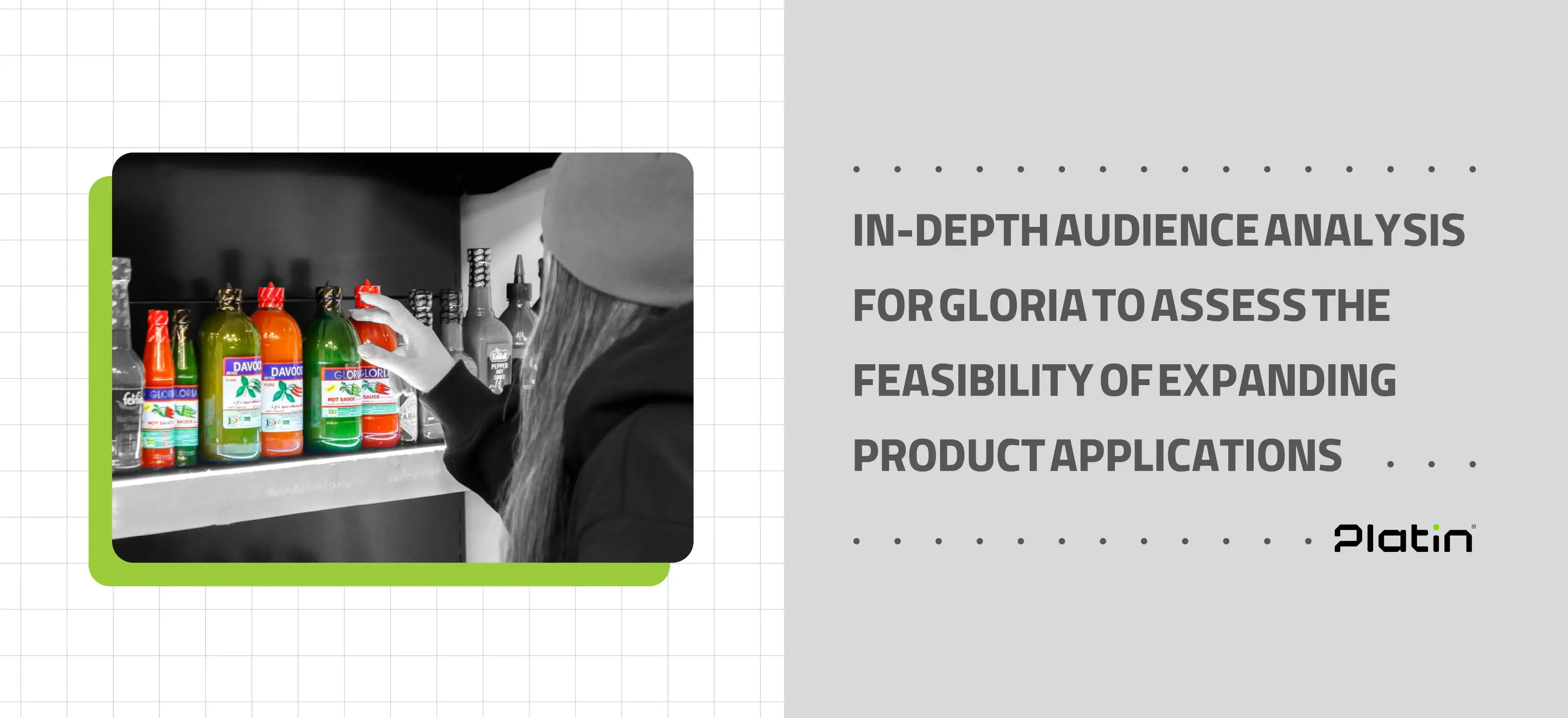 Case Studies
Case Studies
Return to Case StudiesIn-depth audience analysis for Gloria to assess the feasibility of expanding product applications.

Introduction
Gloria is one of the well-known and popular brands in the Iranian market for producing hot sauces. By offering a variety of flavors—including red pepper, green pepper, and garlic-pepper blends—Gloria has established a strong position among consumers of spicy condiments by using high-quality raw materials and standard formulations. Consistent flavor, desirable shelf life, and years of successful market presence have made Gloria a staple choice in the food baskets of many Iranian households.
Problem Statement
Despite its established market position, Gloria faced a key challenge in expanding its market share and increasing product sales. The main question was: “What actions should be taken to boost Gloria’s sales?”
Two main hypotheses were considered:
First, that Gloria might not enjoy sufficient brand awareness and thus may not be prioritized by customers when choosing a hot sauce. Second, that Gloria’s hot sauces generally have a long consumption cycle, which naturally reduces purchase frequency. To validate these hypotheses, a comprehensive audience analysis project was designed and implemented.
Audience Analysis Methodology
To gain an in-depth and multi-dimensional understanding of Gloria’s consumers, a comprehensive behavioral study was carried out using a variety of tools. The analysis incorporated questionnaires, field observations, semi-structured interviews, focus groups, and purchase simulations. The primary goals were to measure brand awareness, identify buying and consumption patterns, uncover motivations and preferences, and analyze the psychographic and demographic traits of Gloria’s target audience.
Audience Analysis Process
Field Observation & Interviews
In this stage, the research team observed real-life customer behavior at local and chain stores during the selection of hot sauces. The assessment focused on three main areas: audience profiling, purchasing behavior, and brand awareness. Evaluators observed the purchasing process, completed a questionnaire for each customer, and conducted short follow-up interviews to identify motivations and decision-making criteria when choosing a brand.
Focus Group Analysis
The focus groups were conducted with actual consumers in three stages. Participants answered questions individually on areas such as brand recognition, attitudes and beliefs, buying behavior, consumption patterns, and preferences.
Participants were assessed in three main steps: tasting three types of dishes prepared both with and without Gloria sauce, completing a questionnaire, and participating in a Q&A session.
In the tasting session, three dishes—Ghormeh Sabzi (a Persian herb stew), chicken kebabs, and pizza—were prepared in two versions: one using Gloria sauce and one without. For example, Ghormeh Sabzi was cooked using Gloria sauce as a replacement for fresh chili, and part of the chicken was marinated with Gloria sauce. This tested consumers’ real interest in using Gloria not just as a side condiment but also as an ingredient during cooking.
In the Q&A session, participants were asked about their preferred ways of using Gloria sauce. Specifically, they were asked whether they would prefer to use it only as a side condiment or integrate it into cooking and marinating processes. This question aimed to identify the preferred consumption context for the brand and explore opportunities to expand its use during meal preparation.
Purchase Simulation
Due to limitations in gathering live field data in real stores—such as the low purchase rate of hot sauce during short observation periods and the difficulty of capturing live shopping behavior—a purchase simulation was designed and implemented.
A shelf was created, stocked with a variety of popular sauces on the market in four main categories: mayonnaise, ketchup, pepper sauces, and other sauces. The shelf design replicated the average layout of several well-known supermarkets to make the shopping experience as realistic as possible and ensure that findings were generalizable.
Participants were then asked to choose their preferred sauce in three simulated scenarios: routine personal grocery shopping at home; choosing an alternative if their preferred brand was unavailable; and shopping for a party where they knew guests enjoyed spicy food. The main goal of this stage was to observe how people make purchasing decisions in different scenarios and to understand the criteria they use when selecting a product. After each scenario, short interviews were conducted to gather deeper insights into participants’ motivations, preferences, and decision-making logic.
Questionnaire
To collect data from a larger sample and validate the qualitative findings, a comprehensive online questionnaire was designed and distributed via social media and messaging apps. The questionnaire focused on audience profiling, brand awareness, attitudes and beliefs, purchasing behavior, consumption patterns, and preferences. According to the Morgan Table, a minimum of 390 responses were required for valid statistical analysis, but ultimately 476 responses were collected. This provided robust supporting data for the insights gathered through other qualitative tools.
Outcome
The final data analysis revealed that Gloria’s consumers can be divided into two main groups:
The first group consists of people who have a high preference for spicy flavors and regularly use hot sauces. The second group includes consumers who are not particularly fond of spicy tastes but keep hot sauces in their kitchen for various reasons, such as adding variety to meals or catering to the preferences of other family members. The findings showed that in both groups, Gloria is perceived as a familiar and trustworthy brand, indicating that its brand awareness is at a satisfactory level and does not pose a major challenge.
However, the analysis also showed that increasing sales requires redefining Gloria’s mental positioning in the minds of consumers. Until now, Gloria has mainly been used as a condiment on the side. The strategic recommendation was to reposition Gloria as a versatile product that can be used not only as a side sauce but also in cooking, marinating, and flavoring during the preparation stages.
This shift in consumption positioning would not only increase the frequency of product use but also shorten the repurchase cycle, which would drive demand and boost sales growth in the market.











